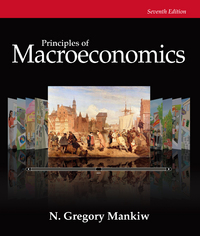Question
Suppose that workers in the labor market can be of two types: high productivity (H) and low productivity (L). If employers knew a worker's type,
Suppose that workers in the labor market can be of two types: high productivity (H) and low productivity (L). If employers knew a worker's type, they would be willing to pay H-types discounted lifetime 1 income of $10,000, and would be willing to pay L-types an income of $7,000. However, without more information, employers do not know the workers' types. In this case, employers would figure that they have a 50-50 chance of ending up with a H-type worker or a L- type worker, and would thus be willing to pay a worker an income $8,500. Workers have the opportunity to do the MAccFin program at UTSC-Management. The opportunity cost of the program (including tuition, effort and psychological cost, and everything else that would have to be given up to complete the program) is $1,000 for the H-type and $2,000 for the L-type. If some workers do the MAccFin program while others do not, employers assume that workers who did the MAccFin program are H-types and workers who did not are L-types. a) Case where the L-types are the first ones to consider doing the MAccFin program: i. Suppose the L-types do the MAccFin program. What are the H-types' net economic benefits (benefit minus opportunity cost) if they imitate the L-types and do the MAccFin as well? What are the H-types' net economic benefits if they do NOT do the MAccFin? Would the H-types imitate the L-types? ii. Anticipating the H-types' reaction discussed above in a)i), what would be the L- types' net economic benefits if they did do the MAccFin in the first place? What would be their possible net economic benefits if they did not do the MAccFin? Should the L-types do the MAccFin in the first place? b) Case where the H-types are the first ones to consider doing the MAccFin program: i. Suppose the H-types do the MAccFin program. What are the L-types' net economic benefits if they imitate the H-types and do the MAccFin as well? What are the L- types' net economic benefits if they do NOT do the MAccFin? Would the L-types imitate the H-types? ii. Anticipating the L-types' reaction discussed above in b)i), what would be the H- types' net economic benefits if they did do the MAccFin in the first place? What would be their possible net economic benefits if they did not do the MAccFin? Should the H-types do the MAccFin in the first place? c) What kind of benefit of education do the answers to parts a) and b) illustrate? Explain briefly.
Step by Step Solution
There are 3 Steps involved in it
Step: 1

Get Instant Access to Expert-Tailored Solutions
See step-by-step solutions with expert insights and AI powered tools for academic success
Step: 2

Step: 3

Ace Your Homework with AI
Get the answers you need in no time with our AI-driven, step-by-step assistance
Get Started


